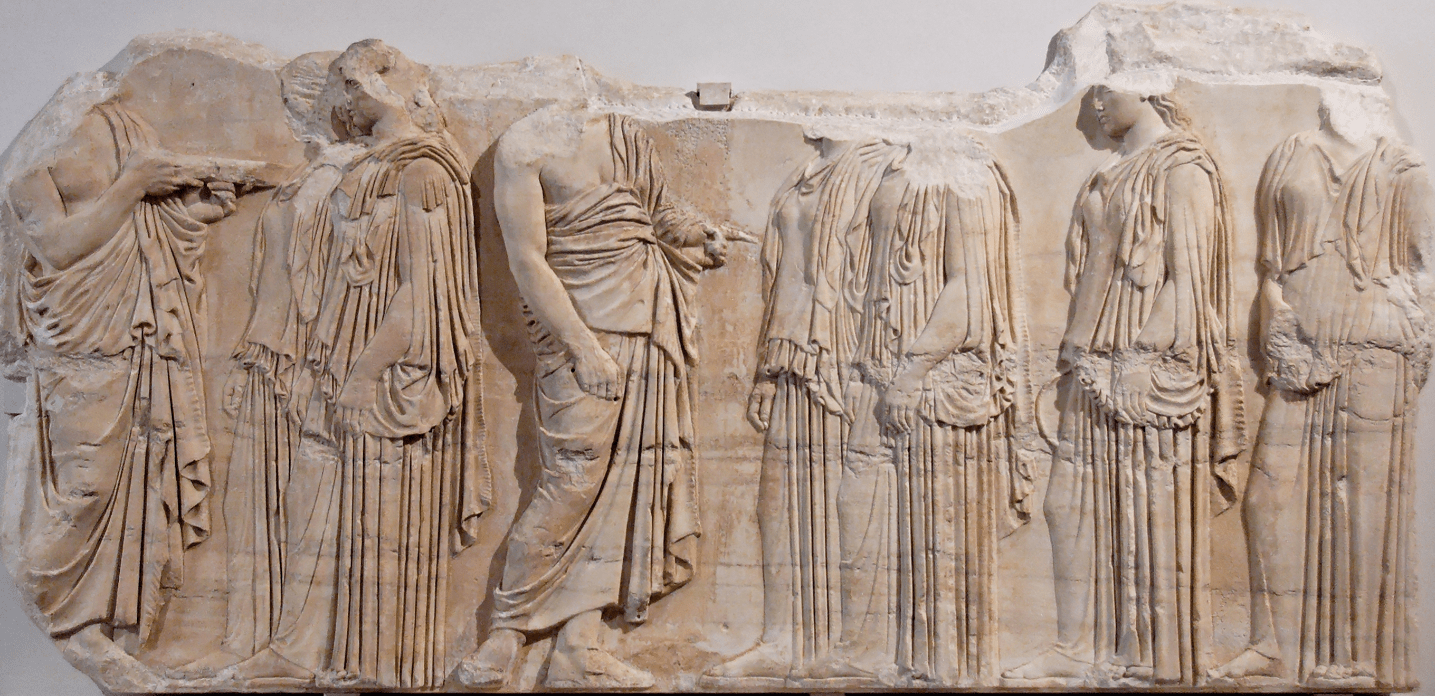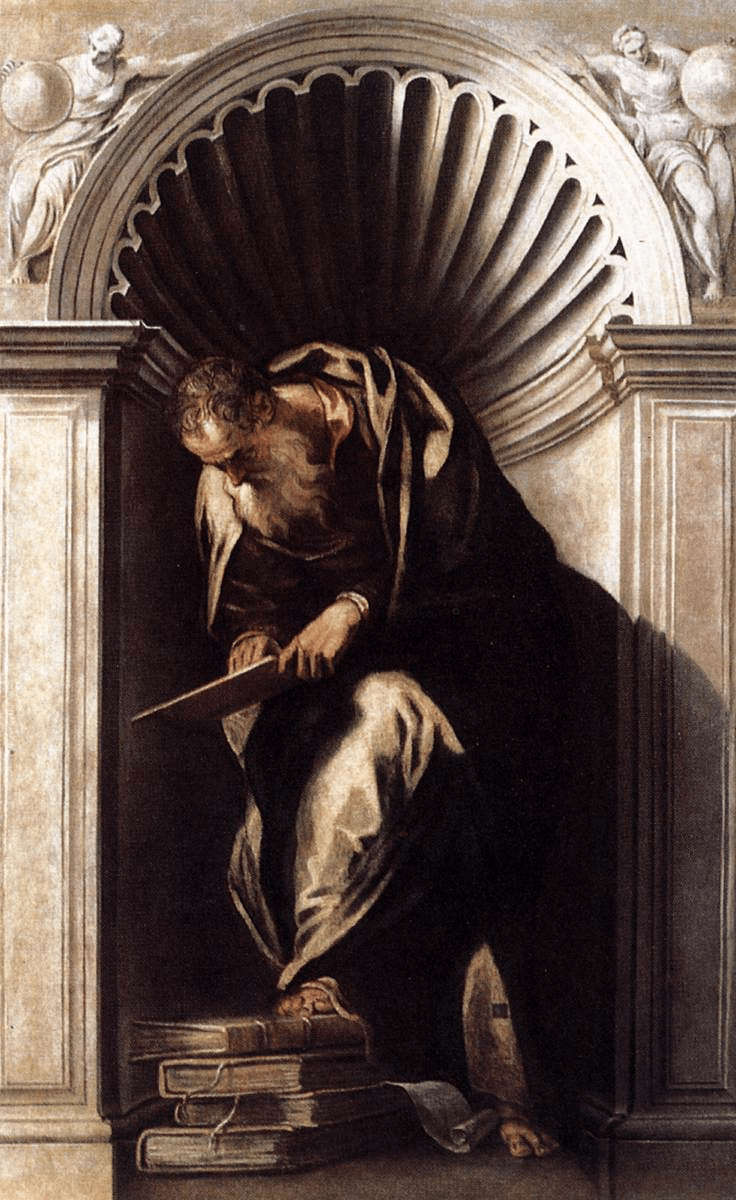This Athenian Philosopher was executed by hemlock poison.
Socrates.
This Goddess of beauty and love has two names one of Greek origin and the other of roman origin.
Aphrodite (Greek), Venus (Roman).
This type of pottery, characterized by black figures on a red background, is prominent in Archaic Greek art.
Black-figure pottery.
"Episteme" means this.
Knowledge.
This ancient Greek philosopher's name meant "broad".
Plato.
This athlete and want to be tyrant won the Olympic games in 640 BCE and was killed after attempting a political coup in Athens.
Kylon.
In an ancient Greek Homeric Hymn, it is written that Hades abducted what goddess from her home.
Persephone.
This term refers to the decorative horizontal band on the frieze of the Parthenon, of which the "Weaver's section" is shown here, depicting a procession honouring Athena.
The Panathenaic Procession.
This "first principle" of René Descartes's philosophy was originally published in french. It later appeared in Latin in his Principia Philosophia.
Je pense, donc je suis;
I think, therefore I am;
or Cogito Ergo Sum.
What are the four kinds of causation according to Aristotle?
Material, Formal, Efficient, Final.
This Athenian playwright was allegedly killed by an eagle mistaking his bald head as a rock and dropping a tortoise on him.
Aeschylus.
This goddess is known as the messenger goddess sending messages to those in need by way of rainbow.
Iris.
Commentators have suggested that nearly every great ancient Greek philosopher can be found in Raphael's The School of Athens, but determining which are depicted is speculative. This notable cynic is pictured with only scant clothing and his bowl.
Diogenes.
This theory of knowledge asserts that the only legitimate source of knowledge about the world is experience.
Empiricism.
What are the five elements in Ancient Greek cosmology?
Earth, Water, Air, Fire, and Aether.
This battle happened during the Greco-Persia Wars and was a major victory for Athens in 480 BCE.
The Battle of Salamis.
This Ancient Hero asked Poseidon to change their gender so they would never be penetrated against their will again.
Caeneus.
This post-Socratic philosopher, pictured below, taught Alexander the Great.
Aristotle.
Immanuel Kant famously split the world of objects into these two categories.
Phenomena and Noumena.
In one account of the death of Pythagoras, while feeling a mob the Greek mathematician encountered a field of this crop, which he may have believed held the souls of the dead. He refused to trample the field, and met his fate.
Fava Beans.
This Athenian ruler became an unforgiving leader after the scandalous murder of his brother in 514.
Hippias.
This was left behind in Pandora’s box after she opened it to release seven evils into the world.
Hope.
The Athena Parthenos was sculpted by Phidias and utilized this artistic technique to make her skin appear to glow. 
'Chryselephantine' (combination of gold and ivory).
These theories of knowledge posit epistemically advantaged socially situated positions which may more easily, with greater accuracy, or with greater ability to represent fundamental truths, access certain facts of the matter.
Standpoint theories.
In the essay The Reason of the Strongest, Jaques Derrida argues the democracy in Plato’s Republic links the concept of “Freedom" (Elutheria) to this, "_______" (Excousia), potentially contradictory, component.
License.